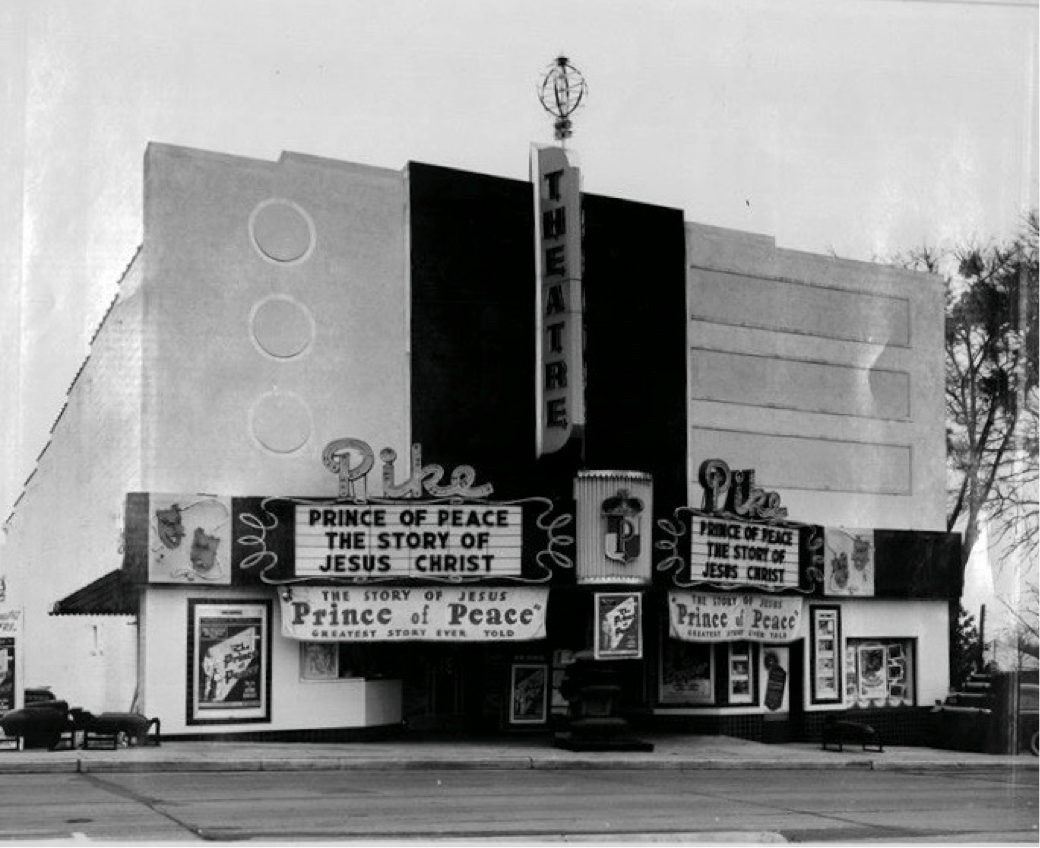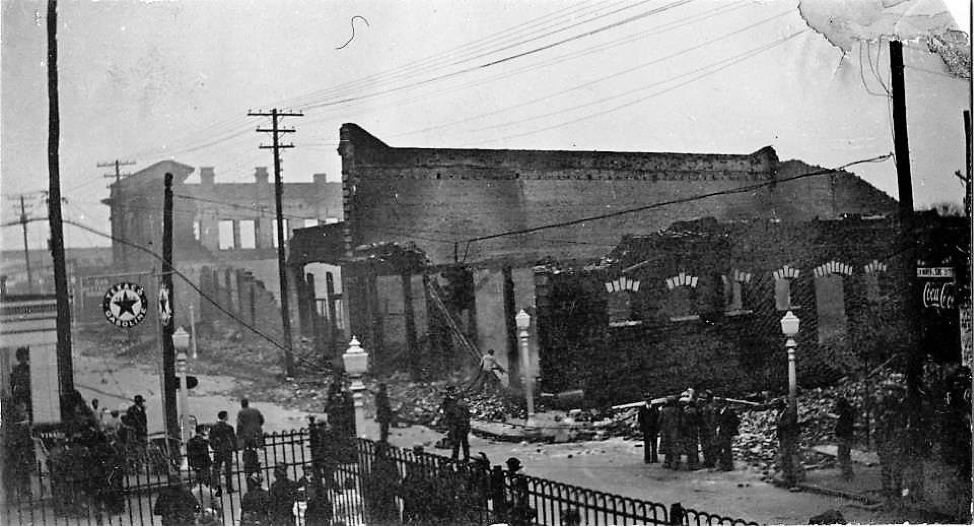LOOKING BACK: Going to the picture show
Published 10:27 am Monday, August 17, 2020
|
Getting your Trinity Audio player ready...
|
In an age where live theatre production was one of the primary sources of entertainment, motion pictures ushered in a whole new world for small towns like Troy, Alabama. Moving pictures allowed people to see faraway lands, intricate productions that didn’t just have to be confined to a stage, and brought forth what we now call “Celebrities.”
Early Days
In the earliest days of the “Pictures Shows” here in Troy, there were many theaters people could attend. Looking over the history of those days, in the span of about 20 years, there were at least six different movie theaters in Troy. The Lyric, Royal, Trojan, Uptown, Walton, and most notable the Princess theater were those that made up the silent era of going to the movies. The Lyric was noted to have been the first movie theater in Troy, opening in 1910. This article describes what it would have been like to sit in a movie in 1911: Troy Messenger February 15, 1911
Playing to a packed house for about three hours, the new Royal Theater, the new moving picture show for Troy had the most auspicious opening last night. The fact was that many had to wait on the outside until they could be accommodated… an electric piano in the vestibule furnishes splendid music… the seating is that of pews, all very comfortably arranged. The floor slopes from the back, allowing those in the rear to see plainly over the heads of others… Mr. Folmar and Mr. Ogletree, proprietors, say that fans will be installed.
Many of those theaters listed came and went within a year or so, except the Princess, which started on the square in the Gellerstedt Building in February of 1915, later moving into the bottom floor of the Masonic Lodge a year later (Synco Drugs today). Herman Moll, music teacher for the public school system at the time (who is credited for Charles Henderson’s “Blue Machine” Marching Band) was contracted to play the violin until “Talkies” arrived, he was accompanied by Dixie Jernigan on the piano. The Princess opened its doors to the public and remained in business for 20 years until it closed in 1935.
Enzor Theater
The Enzor Theater was built by Lane Enzor opening on July 3, 1936. The Enzor was a magnificent theater, especially for the town the size of Troy at the time. It was of a Spanish architectural style, designed to allude to a Spanish outdoor garden with painted clouds and twinkling stars embedded within its ceiling. It also had two Spanish balconies on each side of the screen and another two in the middle of each interior sidewall. The clouds painted on the ceiling and the twinkling stars looked amazingly real when the lights were dimmed. Just imagine the Enzor as a smaller-scale version of the Alabama Theater in Birmingham.
The Enzor opened to Carole Lombard and Preston Foster in the movie, “Love Before Breakfast” to a packed house that July evening. Later on, Lane Enzor opened an eatery connected to the theater, called the Dutch Kitchen.
The Enzor was opened during a time that would later be called “The Golden Age” of Hollywood filmmaking. Although many older Troy citizens have very fond memories of the Enzor, others have a different recollection. Bill Rice once wrote in his book “Troy 1838-2006” that the late Congressman John Lewis of Atlanta, who grew up near Linwood in Pike County, once told Ted Koppel of the ABC television show “Nightline” that the most searing memory of the segregation days of his youth was “having to go upstairs to the balcony to watch a movie in Troy.”
Though it may not be any consolation to Mr. Lewis, but there was no movie theater at all for African Americans until the Enzor was built, making it the first in Troy to offer a seating area for African Americans at the time.
The Enzor showed its last movie on April 26, 1957. It had been in stiff competition with the Pike Theater and the Starlite, and they had a dollar movie, but Rice said it best “there was another factor in the Enzor’s demise- television.”
Starlite Drive-in
When you think of the 1950s, what pops into your head? Chocolate malts from the drugstore, poofy dresses that all the girls wore, and drive-in movies. Drive-in movies saw their height in the 1950s and ’60s, and Troy secured their very own during that time like many other towns then. The Starlite drive-in theater opened on November 5, 1949, about where Burkes Outlet stands today. Cars rolled up to the lot, secured their concessions, and viewed “California” starring Ray Milland and Barbara Stanwyck. The Starlite was owned by a group of local businessmen, including Jimmy Gaylard. Gaylard was also the general manager of the Starlite.
When the theater first opened, it had a small screen compared to today’s standard, but years later, a widescreen was installed with the invention of Cinemascope. Along with the rest of America’s drive-in movie theaters, the Starlite slowly fizzled out due to the dropping popularity. Along with the lowering of the popularity of drive-ins, the city of Troy was expanding south in its direction and thus a perfect place for retail space. The Starlite finally closed November 15, 1987.
After it closed, the Starlight’s widescreen was obtained by Troy State University. Wiley Sanders cut in half and transported both sides of the screen to US Highway 231 N. near the airport. It was then used as an outdoor billboard for the college. When it was dedicated it became the largest billboard in the state of Alabama.
Just to note during the time of the Starlite and the Pike theaters, the University Theater opened for a few years in The Plaza Shopping Center, but it never seriously competed and fizzled out after a very short period.
The Pike Theatre
Many more people alive today would remember the Pike Theater rather than the Enzor. Located on the Corner of Elm and North Brundidge Streets stood the Pike Theater for 49 years. The Pike opened up on September 5, 1949, with the movie “Once More My Darling” starring Robert Montgomery and Ann Blythe.
Many Troy businessmen owned the Pike Theater collectively, and the first manager was Mr. Eddie Timberline. Despite lacking the glamor and elegance of the Enzor the Pike exemplified a more modern approach to the ever-growing generation later to be known as the baby boomers. The Pike opened and within the concession stand patrons could find a chocolate-covered ice cream bar on a stick, revolutionary to those who had grown up and always lived in this then small city. Later, in 1989, the Pike was converted into three separate theaters, and yet they continued to see numbers drop. In 1998 the City of Troy bought the property and razed the local landmark. The space in which the old theater stood was used and renovated as phase 3 construction of what is now known as the Jimmy C. Lunsford Municipal Complex.
Continental Cinema 6
The same year the Pike Theater closed (1998), Jeff Taylor opened Continental Cinema Six theater on US 231 N. near the Pike Pioneer Museum. The movie theater that we all know and enjoy today is the only theater in Troy. The theater originally only had five screens but today it has six. Although in an age of instant entertainment, it still seems like going to the movies is still a fun thing to do on date night, going with your family, or hanging out with friends on a Friday night. When school starts back at Troy University, it is always hard to find a good seat on the first and third Wednesday of the month when $2 movie night is taken advantage of by all college students. Going to the movies has been a tradition enjoyed by Trojans for 110 years now, and its one I hope continues for many more years to come.
Story by Nicklaus Chrysson
For more stories from the July/August edition of TroyLife, pick up a copy at various locations around the community or at The Messenger office.






